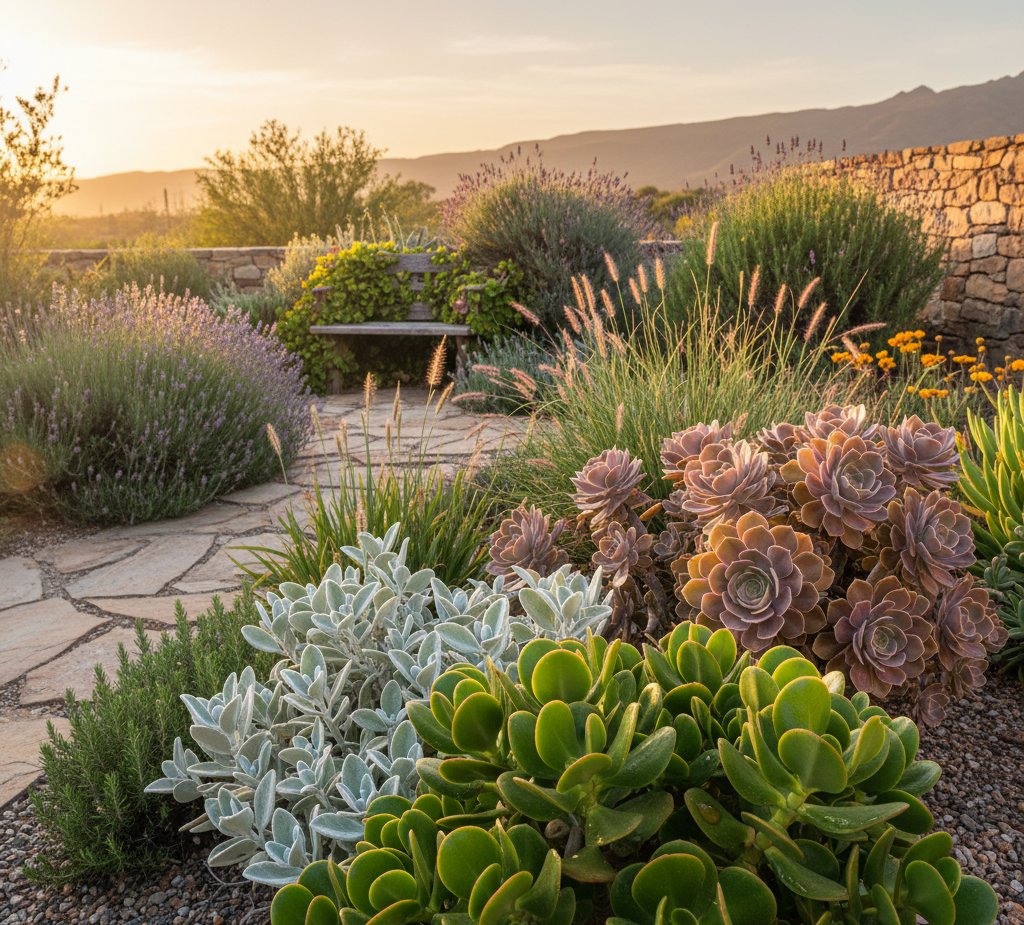Succulents For Sensory Gardens
Succulents bring a unique dimension to sensory gardens by engaging touch, sight, and even sound in subtle ways. Their varied shapes, colors, and textures create an interactive space that feels both calming and intriguing. You can use succulents to design a sensory garden that is low-maintenance, visually striking, and rich with tactile experiences.
You notice the smooth surface of jade plants, the soft fuzz of kalanchoe, or the geometric patterns of echeveria, each offering a different sensation. Their ability to thrive in many conditions means you can create a sensory garden that lasts without constant care. Pairing them with companion plants that add fragrance or sound from rustling leaves makes the experience even more engaging.
By choosing succulents for your sensory garden, you create a space that stimulates curiosity while staying practical. Their resilience and variety let you design a garden that is both functional and enjoyable, blending beauty with sensory exploration.
Why Choose Succulents for Sensory Gardens
Succulents bring unique textures, colors, and forms that make them valuable sensory plants. Their low maintenance needs also make them practical for long-term use in sensory gardens designed for all ages.
Benefits of Succulents in Multi-Sensory Spaces
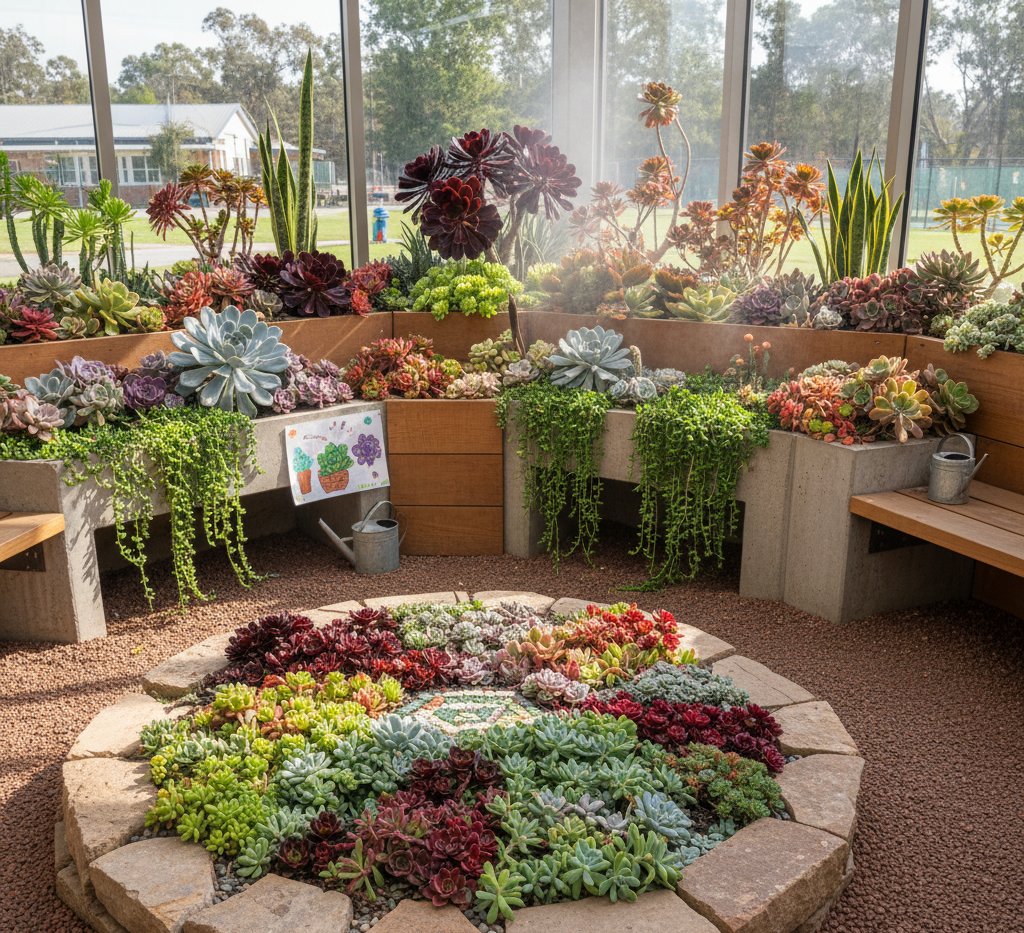
Succulents thrive in a wide range of environments, making them suitable for small or large sensory gardens. Their ability to store water allows you to maintain a vibrant display with less frequent care. This resilience is especially helpful in community or school gardens where daily upkeep may not be possible.
They also provide visual variety. Succulents come in shades of green, red, purple, and even blue-gray. Pairing different species together creates striking contrasts that keep the space engaging and inviting.
Another benefit is their compact growth. Many succulents stay small, which makes them easy to fit into raised beds, containers, or borders. This adaptability lets you design accessible spaces for children and adults with mobility challenges.
How Succulents Engage the Five Senses
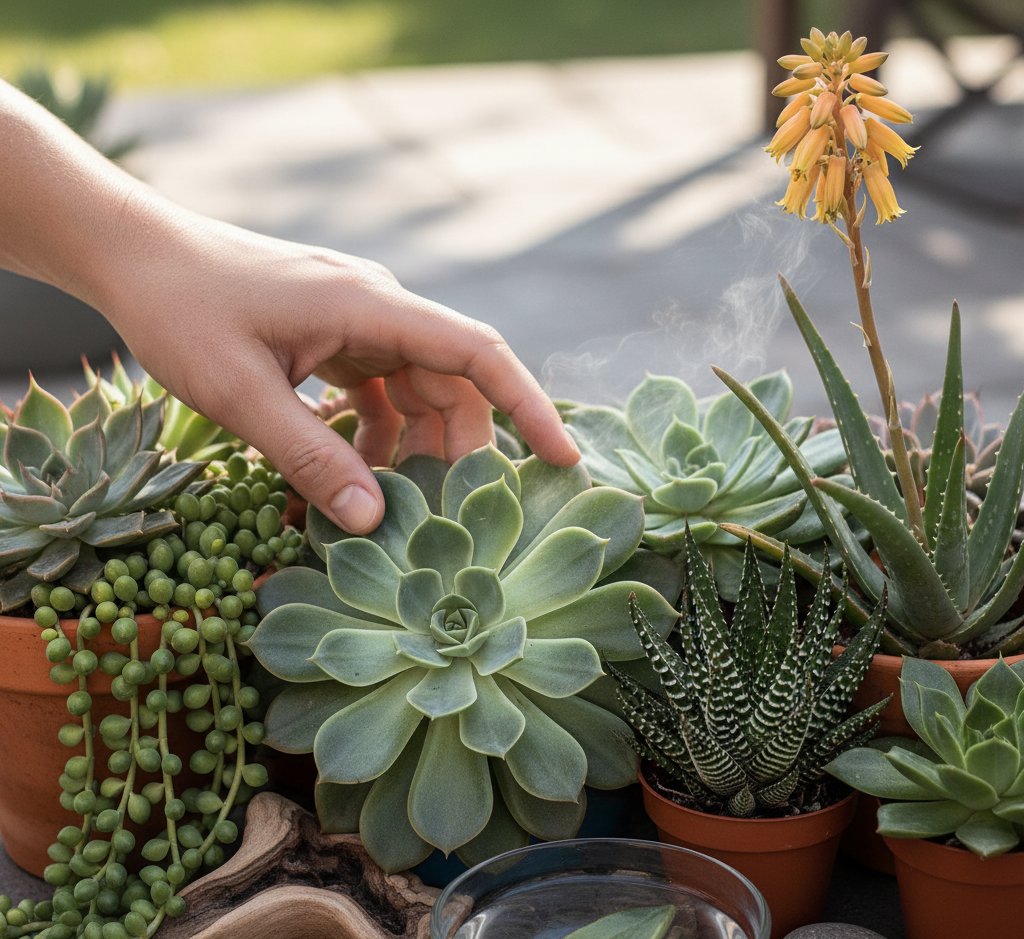
Touch: The thick, fleshy leaves of succulents offer smooth, rubbery, or bumpy textures. Some, like Echeveria, feel waxy, while others, such as Haworthiopsis, have ridged surfaces.
Sight: Their geometric shapes and rosette patterns create natural focal points. Some species bloom with bright flowers that add seasonal interest.
Smell: While most succulents are not strongly fragrant, a few varieties, like certain aloe species, release subtle scents when in bloom.
Taste: Edible succulents, such as aloe vera, can introduce safe tasting experiences when handled correctly.
Sound: Succulent gardens can include gravel, sand, or ceramic pots that produce soft sounds when touched or walked on, complementing the plants’ sensory role.
Comparing Succulents With Other Sensory Plants
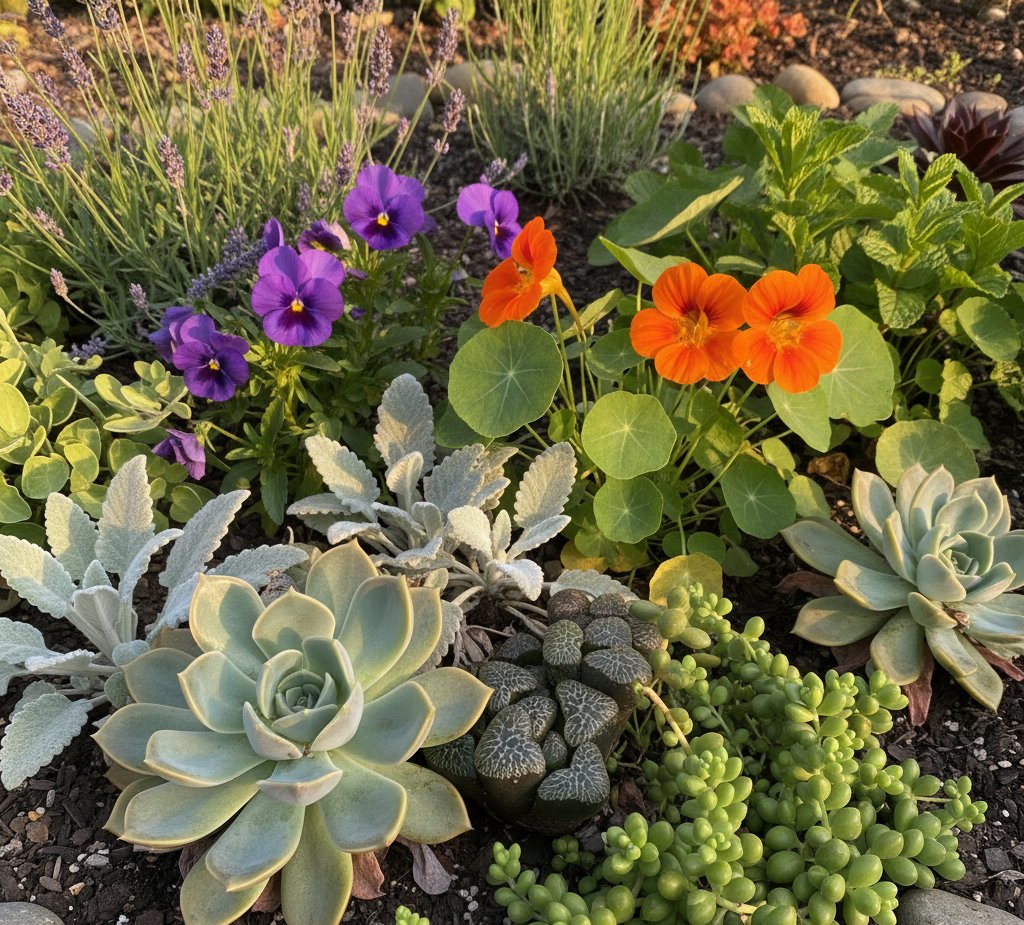
Unlike herbs such as lavender or mint, succulents do not rely on strong fragrance for sensory impact. Instead, they focus on texture and form, which adds balance to a sensory garden.
Compared to flowering plants like pansies or nasturtiums, succulents bloom less often but maintain year-round interest with their foliage. This makes them reliable anchors in a design that changes with the seasons.
Succulents also require less water than many sensory plants. If you want a low-maintenance option that still supports exploration of multiple senses, succulents provide a practical and visually appealing choice.
Selecting Succulents and Companion Plants for Sensory Gardens
When planning a sensory garden with succulents, you need to think about more than just drought tolerance. The plants you choose should offer texture, fragrance, taste, and color that invite interaction and create variety in the space.
Best Succulents for Touch and Texture
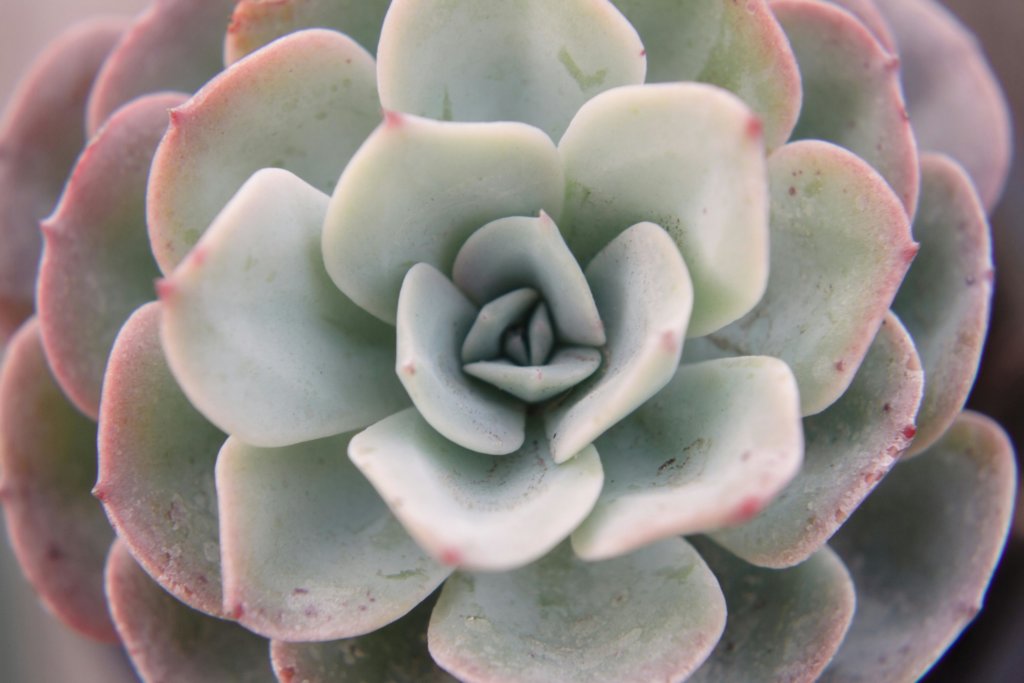
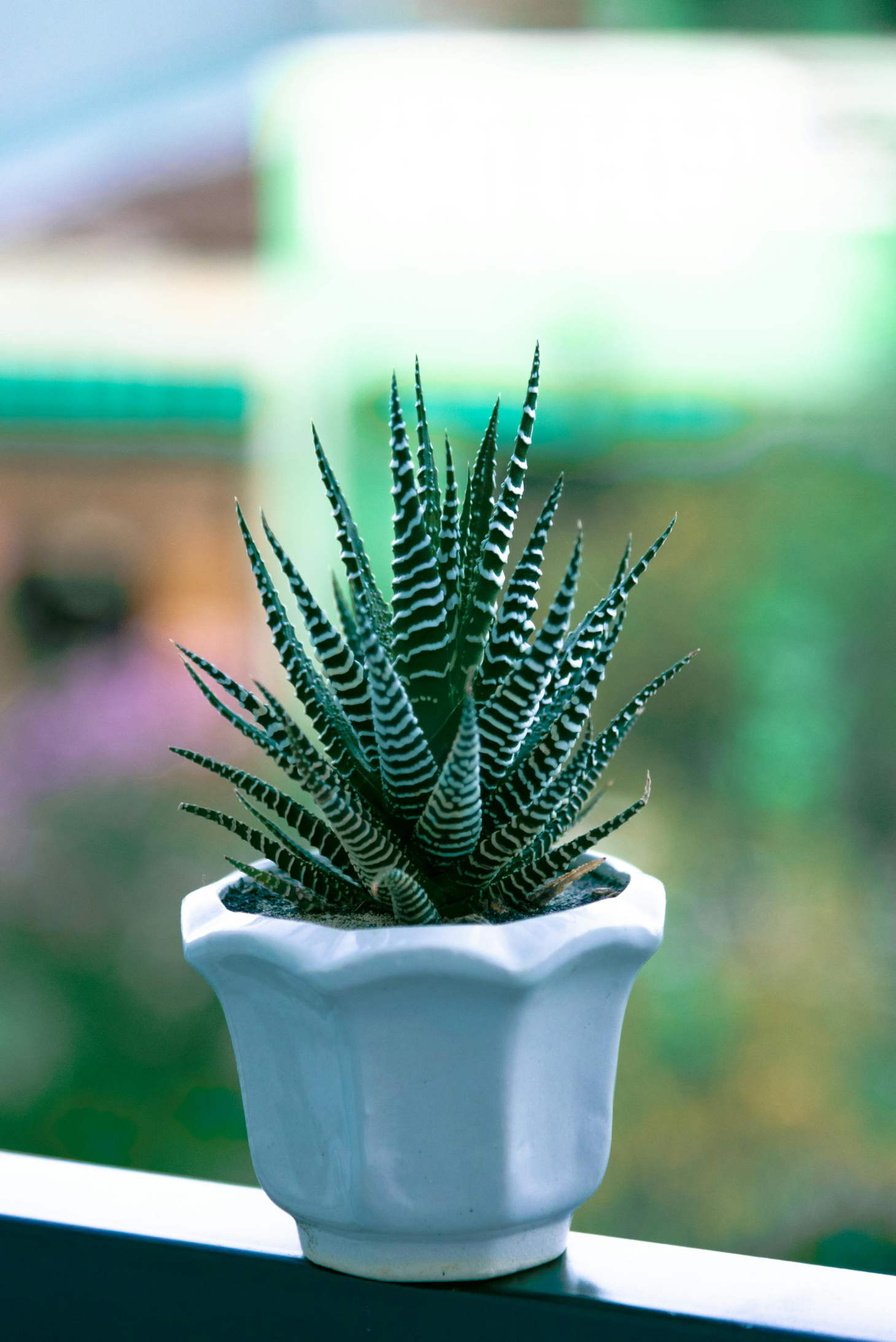
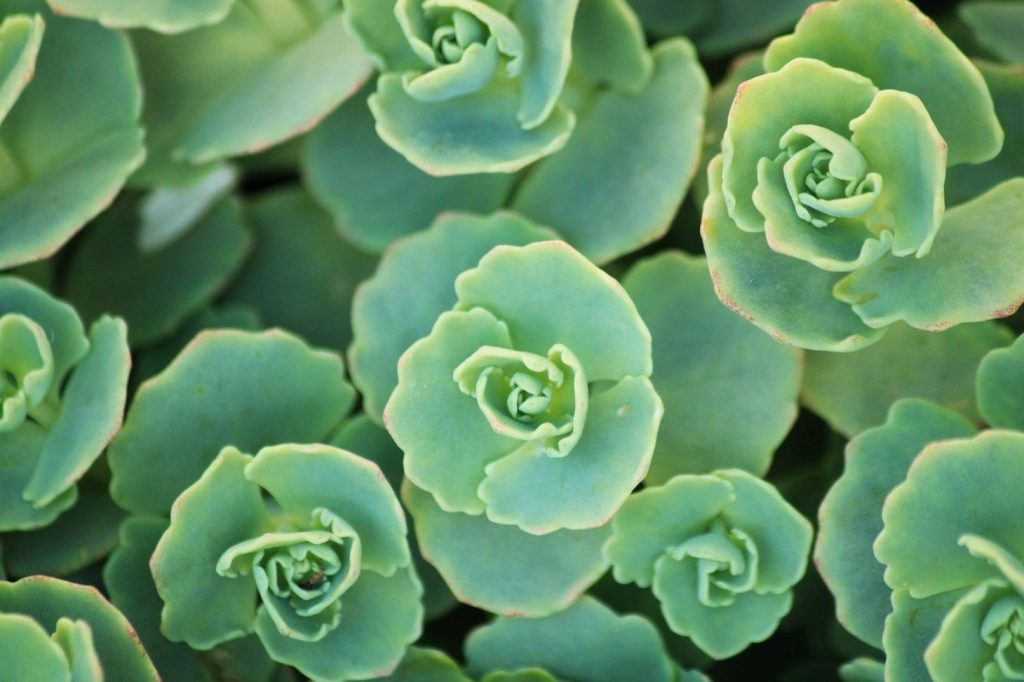
Succulents naturally provide a wide range of textures. Plants like Echeveria have smooth, fleshy leaves, while Haworthiopsis offers firm, ridged surfaces. Sedum varieties add small, clustered leaves that feel different under your fingers.
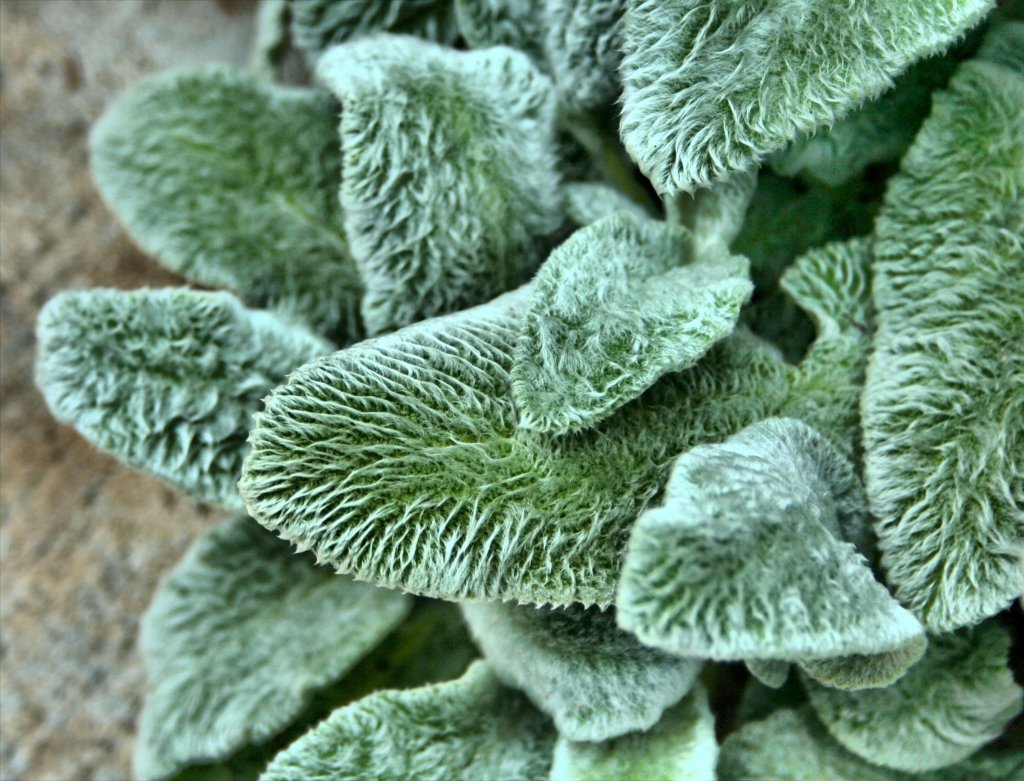
To enhance this tactile experience, you can pair succulents with plants such as lamb’s ear, known for its soft, velvety leaves. Plectranthus tomentosa (Succulent Coleus or Vicks Plant) also works well, offering green, fuzzy foliage with a soft, velvety surface. These contrasts make the garden more engaging when you explore it by touch.
Consider grouping plants with different leaf sizes and finishes. For example:
| Plant | Texture |
|---|---|
| Echeveria | Smooth, waxy |
| Haworthiopsis | Firm, ridged |
| Lamb’s ear | Soft, velvety |
| Coleus | soft, velvety |
This mix gives you a range of sensations that encourage hands-on interaction.
Fragrant and Aromatic Plant Pairings
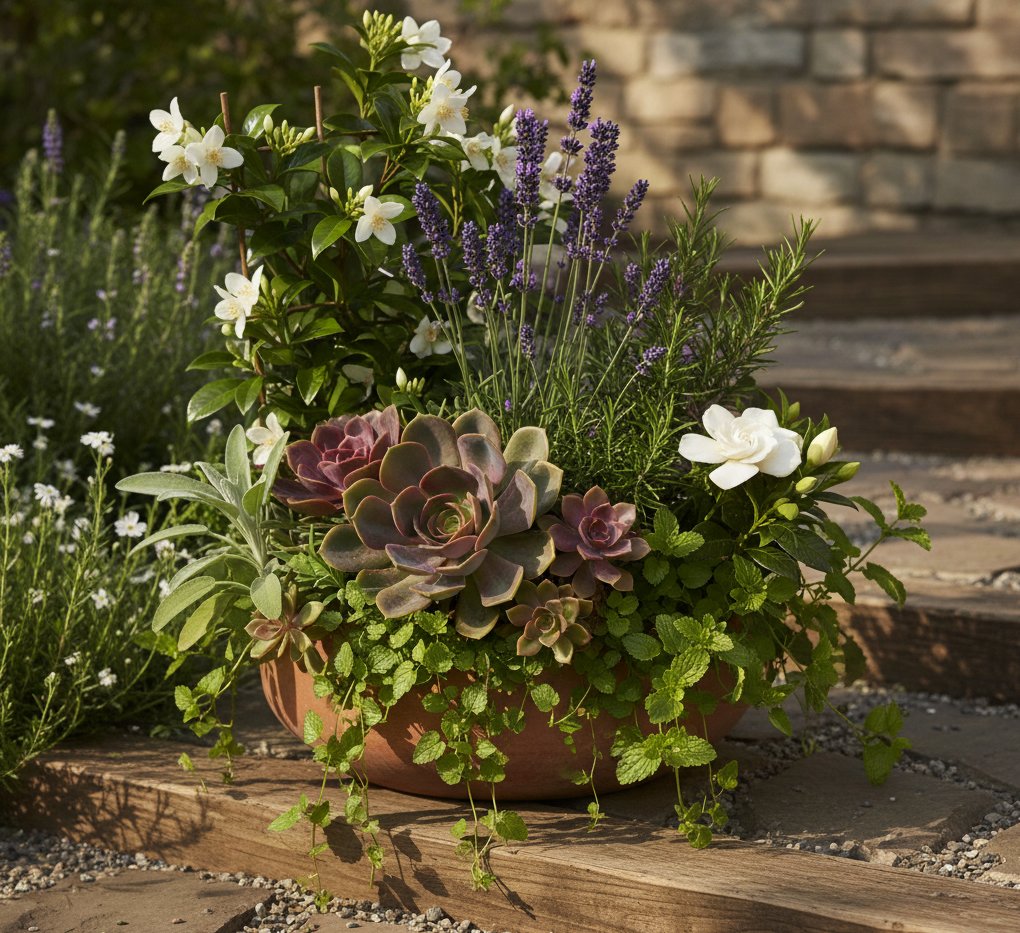
Succulents themselves are not usually fragrant, so pairing them with aromatic plants adds another sensory layer. Lavender provides a strong floral scent, while rosemary, sage, and thyme bring earthy, herbal notes. Lemon balm and mint add fresh, cooling aromas that release easily when touched.
For a sweeter fragrance, you can include jasmine or gardenia. These flowers balance the sharper herbal scents and create a more inviting atmosphere. Placing them near pathways ensures that you notice their aroma as you move through the space.
Plant combinations like lavender with echeveria or rosemary with sedum allow you to enjoy both texture and fragrance in one area. This layering of sensory qualities makes the garden feel more complete.
Edible and Tasty Options
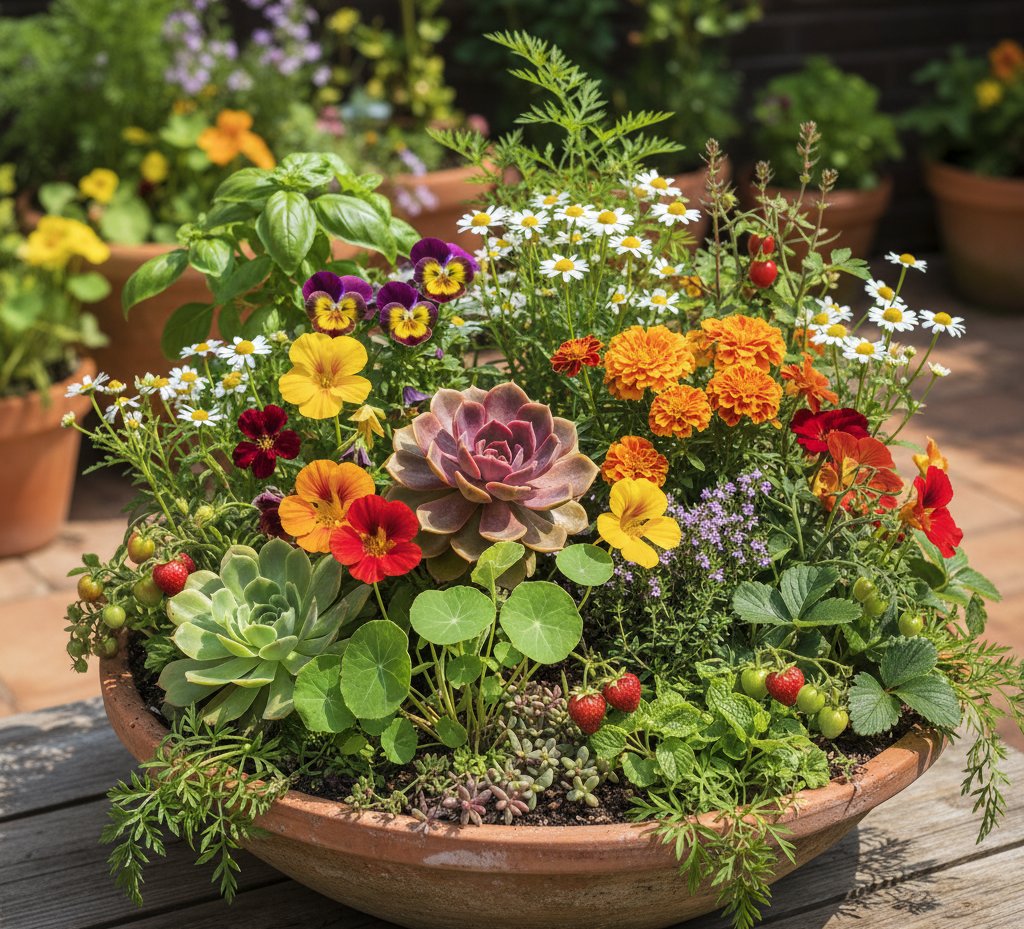
Adding edible plants to a succulent garden gives you another way to interact with the space. Edible flowers such as nasturtiums, pansies, marigolds, and chamomile can grow alongside succulents and provide mild flavors.
You can also plant small fruits and vegetables. Strawberries, tomatoes, and carrots are compact enough to fit into mixed beds. Herbs like basil, mint, and thyme bring both taste and aroma, making them versatile choices.
These plants not only add flavor but also encourage you to engage with the garden in a practical way. Harvesting a few leaves or flowers connects you directly to the plants beyond sight and smell.
Colorful and Visually Stimulating Choices
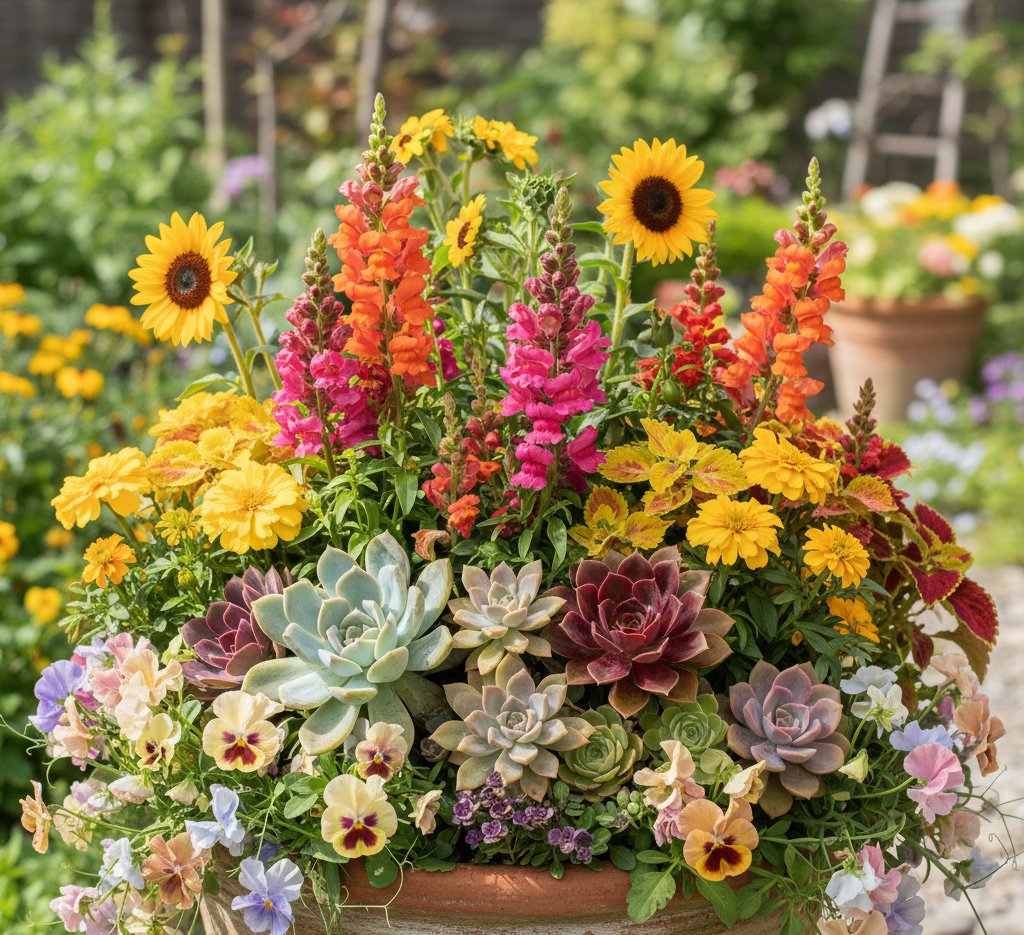
Succulents already come in many shapes and shades, ranging from pale blues to deep purples. You can add more visual impact by pairing them with bright flowering plants. Snapdragons, marigolds, sunflowers, and roses bring strong color contrasts that draw attention.
Succulent Coleus (Plectranthus tomentosa) is useful for contrasting foliage color and texture, offering vibrant green, fuzzy leaves that stand out against other gray-green succulents. Sweet peas and pansies provide softer tones that balance bolder flowers.
When you mix succulents with colorful flowers, you create layers of height, hue, and form. This keeps the garden visually stimulating throughout the growing season and gives you something new to notice each time you visit.
Designing and Enhancing Sensory Gardens With Succulents
Succulents add texture, form, and resilience to sensory gardens. Their unique shapes and surfaces pair well with features like raised beds, water elements, and seating areas, creating spaces that are accessible, engaging, and easy to maintain.
Incorporating Succulents Into Garden Layouts
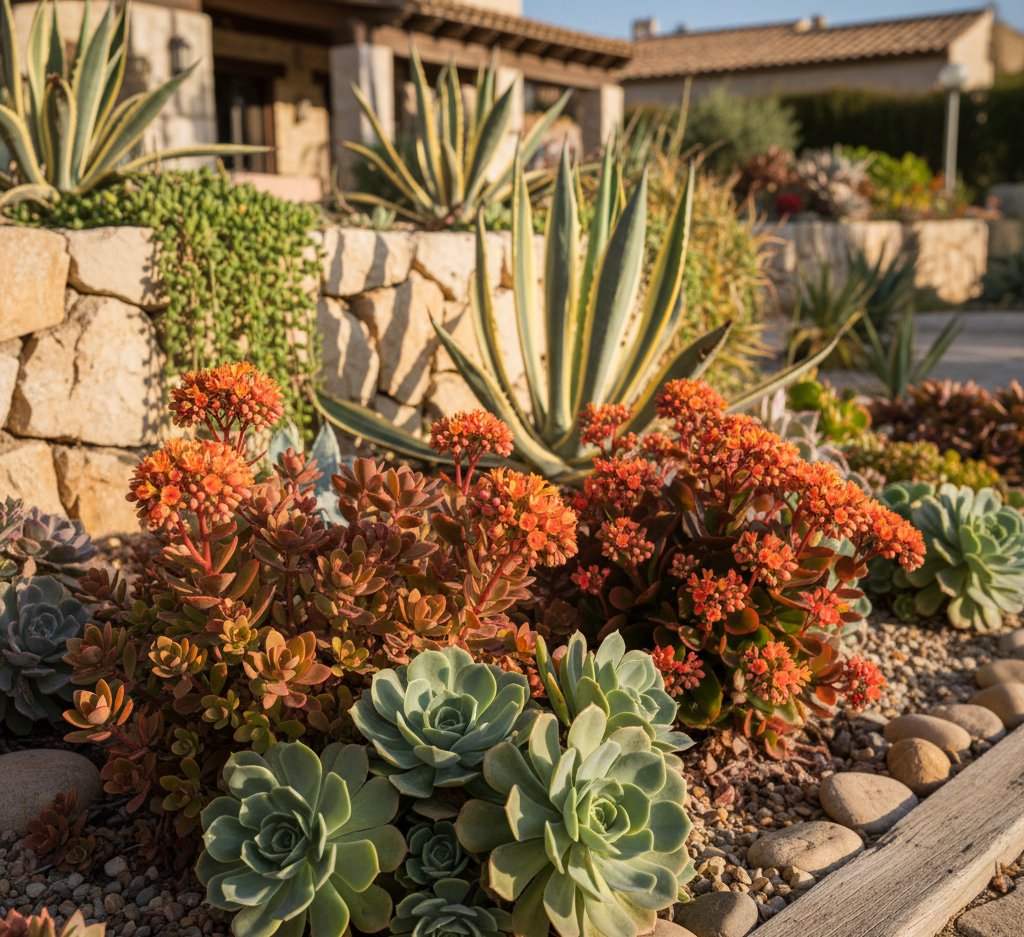
When you design a sensory garden, use succulents to bring variety in texture and color. Many succulents, such as echeveria or sedum, have rosettes and fleshy leaves that invite touch. Others, like kalanchoe, provide seasonal blooms that add visual interest.
Succulents grow well with ornamental grasses such as fountain grass or bamboo clumps. Pairing them creates contrast between soft movement and firm structure. You can group succulents in clusters for bold impact or scatter smaller varieties along borders for subtle texture.
To extend seasonal appeal, combine succulents that thrive in different conditions. Hardy varieties can handle cooler weather, while tender types shine in warmer months. This layering ensures that your garden has sensory interest across the year.
Vertical Gardening and Trellises
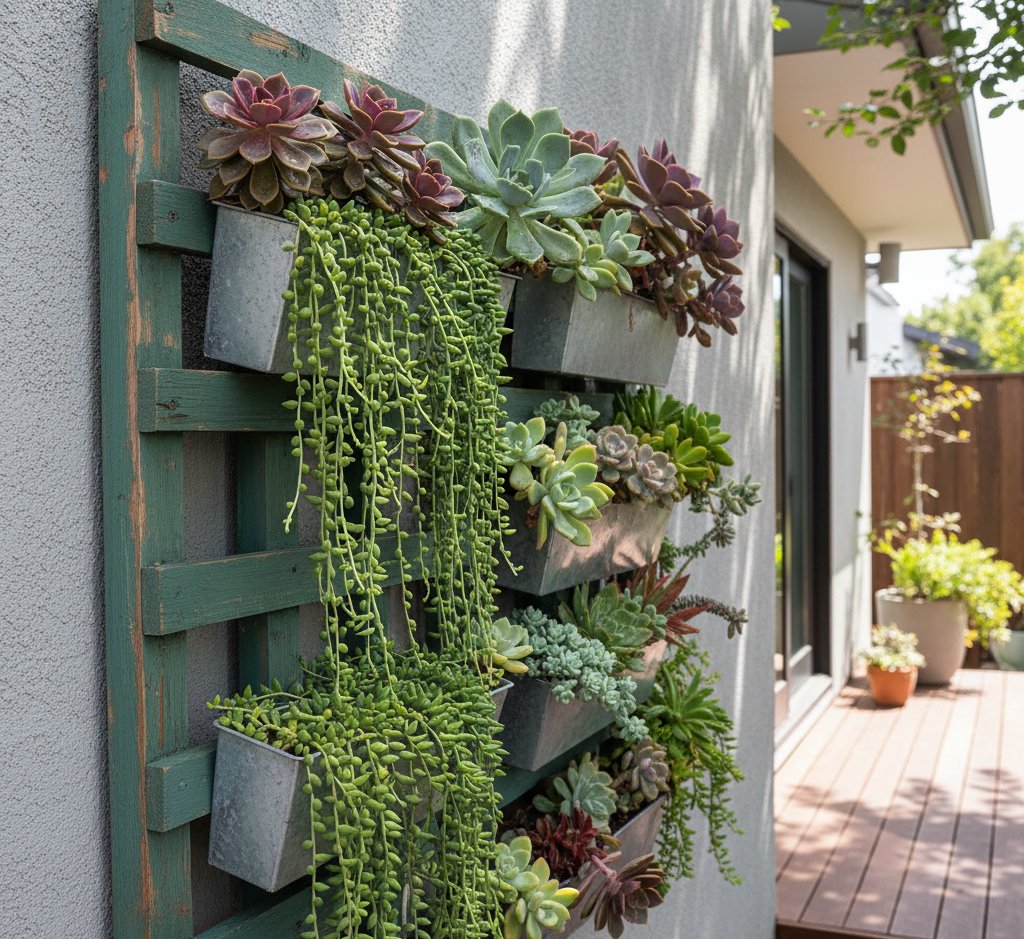
Succulents adapt well to vertical gardening. You can plant them in wall-mounted frames, hanging containers, or stacked planters. This saves space and brings touchable textures closer to eye level.
Trellises usually support climbing plants, but you can use them to frame vertical succulent displays. For example, mount shallow trays filled with soil and trailing succulents like string of pearls or burro’s tail. This creates living panels that add both sight and touch elements.
Vertical succulent gardens also reduce bending and kneeling, which improves accessibility. They can be placed near seating areas or along walls to create defined “rooms” within your sensory garden.
Pathways, Raised Beds, and Accessibility
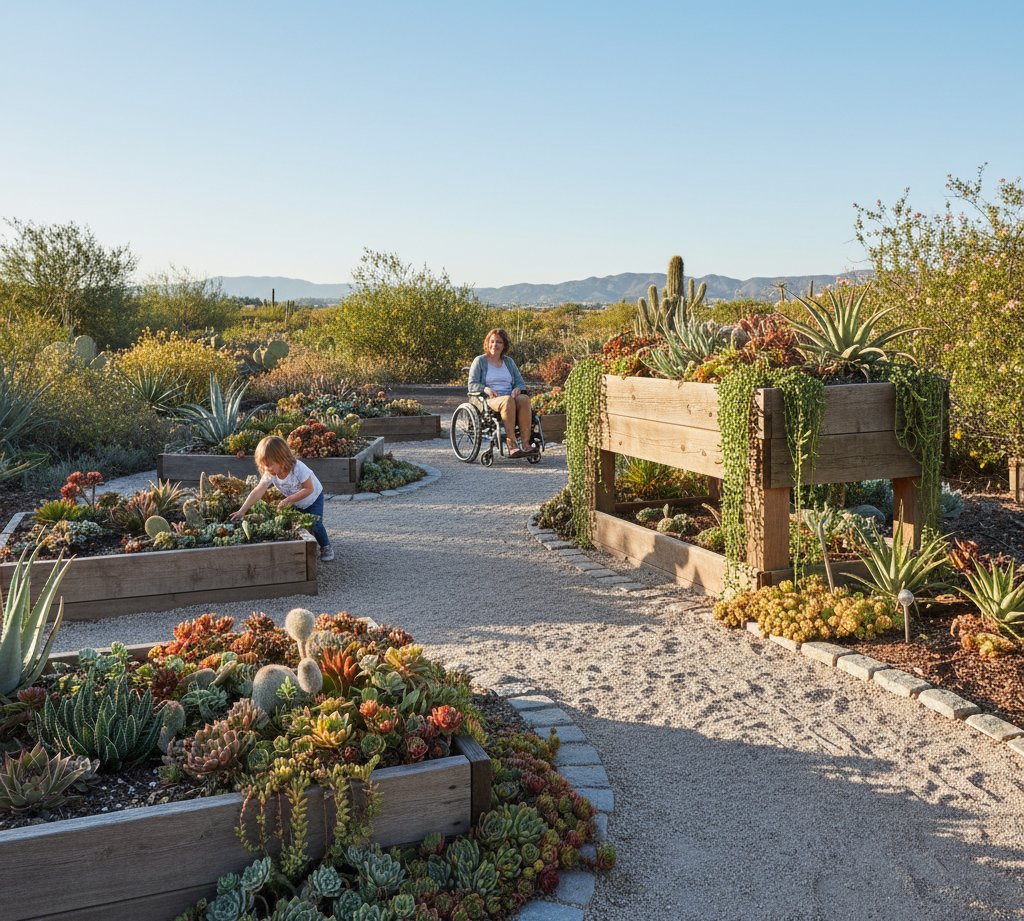
Pathways guide visitors through your garden and give structure to the layout. Use materials like gravel, stone, or wood chips to create clear walking routes. Place low-growing succulents, such as hens and chicks, along the edges to soften hard surfaces.
Raised beds make it easier to reach plants without strain. This is especially useful if you want to encourage interaction with succulents’ textures. Beds can be built at different heights to suit children, adults, or wheelchair users.
Consider adding wide paths and smooth surfaces so that wheelchairs, walkers, or utes can move through the space comfortably. Accessibility ensures that everyone can enjoy the sensory experience.
Sensory Features: Water, Sound, and Seating
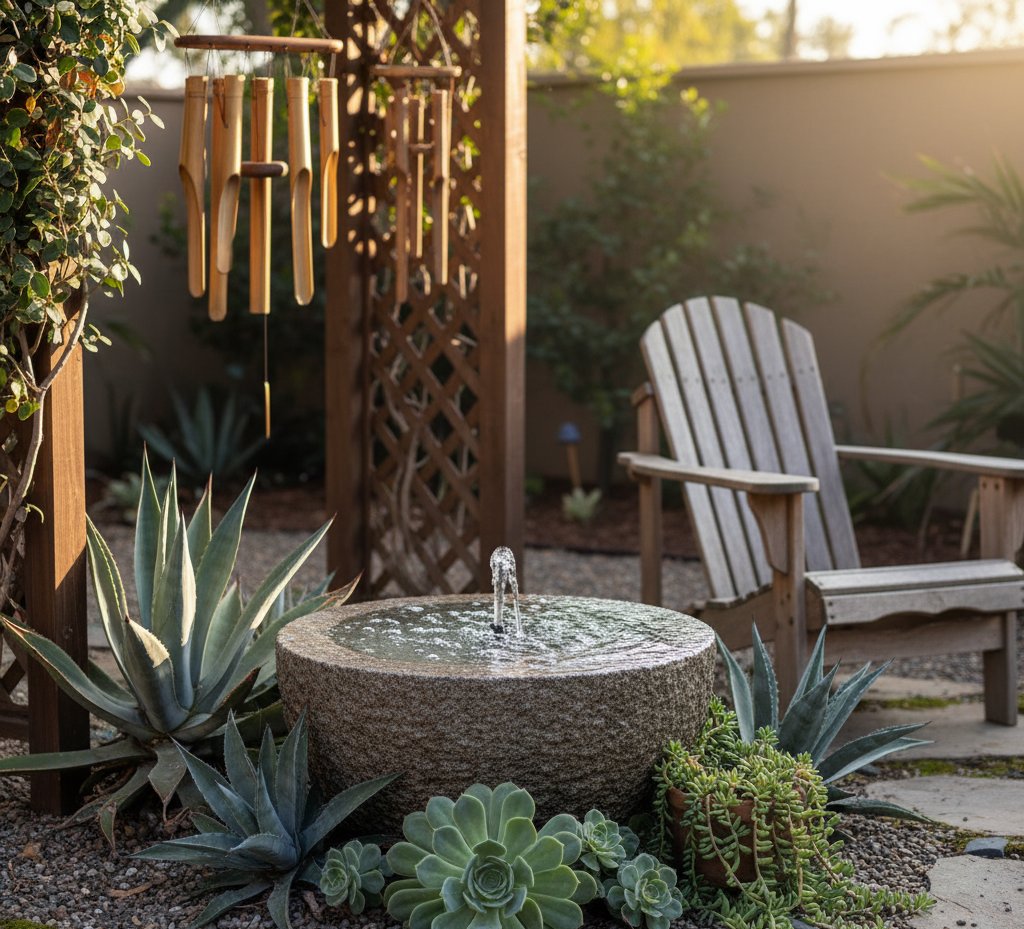
Water features, such as small fountains or bubbling stones, add sound and movement to balance the stillness of succulents. Place drought-tolerant succulents nearby since they do not mind occasional splashes.
Wind chimes hung from nearby structures introduce gentle sounds. Pair these with succulents that have striking forms, like agave, to create focal points where sound and sight meet.
Seating areas allow you to pause and engage with the surroundings. Position benches or chairs near raised beds or vertical succulent walls. This makes it easier to see, touch, and enjoy the plants while resting in a comfortable spot.

